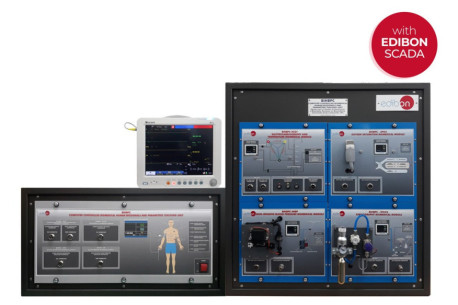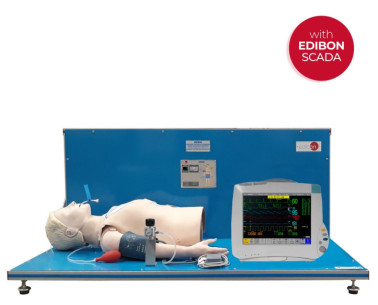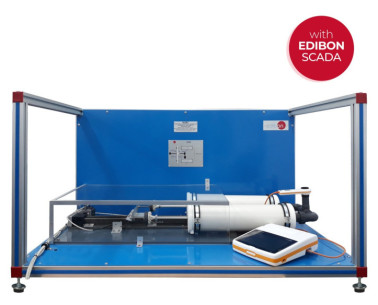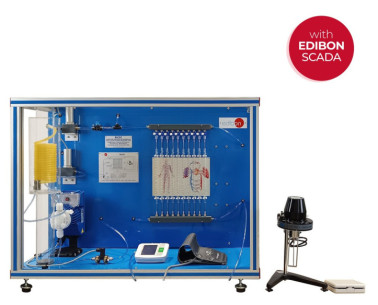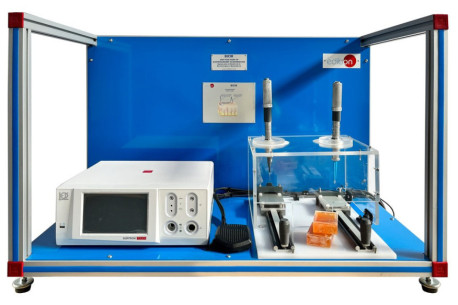- Home
- Products
- 1.- PHYSICS
- ACADEMIC PROGRAMS
- HIGHER TECHNICAL EDUCATION
- FOOD ENGINEERING
- TOPOGRAPHIC ENGINEERING
- GEOLOGY
- FOREST ENGINEERING
- ENVIRONMENTAL ENGINEERING
- ECOLOGICAL ENGINEERING
- TEXTILE ENGINEERING
- ENGINEERING FOR AGRICULTURAL INDUSTRIES
- MECHANICAL ENGINEERING
- CHEMISTRY
- CHEMICAL ENGINEERING
- PROCESS ENGINEERING
- GEOLOGICAL, MINES AND OIL ENGINEERING
- PETROLEUM TRAINING CENTER
- NAVAL ENGINEERING
- AGRICULTURAL ENGINEERING
- ELECTRONICS ENGINEERING
- ARCHITECTURE
- COMPUTER SCIENCE & ENGINEERING
- NUCLEAR ENGINEERING
- AUTOMATIC ENGINEERING
- ENERGETIC ENGINEERING
- ENERGY TRAINING CENTER
- ELECTRICAL ENGINEERING
- SYSTEMS ENGINEERING
- AERONAUTICAL ENGINEERING
- OCEAN ENGINEERING AND MARINE SCIENCES
- PHYSICS
- INDUSTRIAL ENGINEERING
- INTERNATIONAL CENTER FOR TECHNICAL TRAINING, DEVELOPMENT AND RESEARCH
- MATERIALS ENGINEERING
- METALLURGICAL ENGINEERING
- CIVIL ENGINEERING
- TELECOMMUNICATION ENGINEERING
- THERMAL ENGINEERING
- TECHNICAL AND VOCATIONAL TRAINING
- ELECTRONICS
- COMMUNICATIONS
- ELECTRICITY
- COMPUTER SCIENCE
- AUTOMOTIVE TECHNOLOGY
- CIVIL ENGINEERING
- MECHANICAL AND MANUFACTURE
- MECHANICAL AND METAL
- FLUID MECHANICS
- REFRIGERATION AND AIR CONDITIONING
- INDUSTRIAL CHEMISTRY
- CHEMISTRY
- FOOD TECHNOLOGY
- AGRICULTURAL
- AGROINDUSTRY
- MAINTENANCE
- MARITIME AND FISHERY
- AERONAUTICAL MAINTENANCE
- INSTRUMENTATION AND CONTROL
- ENVIRONMENTAL
- TECHNOLOGY
- CONSTRUCTION TECHNOLOGY
- ELECTROMECHANICAL TECHNOLOGY
- STRUCTURAL DESIGN TECHNOLOGY
- INDUSTRIAL PRODUCTION TECHNOLOGY
- INFORMATION TECHNOLOGY
- QUALITY CONTROL
- ENERGY SYSTEMS TECHNOLOGY
- MINING AND PETROLEUM TECHNOLOGY
- NATURAL GAS TECHNOLOGY
- RENEWABLE ENERGY
- TELECOMMUNICATIONS TECHNOLOGY
- MECHANICAL TECHNOLOGY
- WIND TECHNOLOGY
- NUCLEAR TECHNOLOGY
- PROCESS CONTROL TECHNOLOGY
- GENERAL SERVICES TECHNOLOGY
- LABORATORY TECHNOLOGY
- AUTOMATION AND MECHATRONICS
- TRANSPORTATION AND LOGISTICS
- HIGHER TECHNICAL EDUCATION
- 2.- ELECTRONICS
- 3.- COMMUNICATIONS
- 4.- ELECTRICITY
- 5.- ENERGY
- 5.1.- SMART GRIDS AND POWER SYSTEMS
- 5.2.- MICROGRIDS
- 5.3.- RENEWABLE ENERGIES
- 5.3.1.- PHOTOVOLTAIC SOLAR ENERGY
- 5.3.2.- SOLAR THERMAL ENERGY
- 5.3.3.- WIND ENERGY
- 5.3.4.- MARINE ENERGY
- 5.3.5.- GEOTHERMAL ENERGY
- 5.3.6.- HYDRAULIC ENERGY
- 5.3.7.- BIOFUELS
- 5.3.8.- STORAGE SYSTEMS
- 5.3.9.- HYDROGEN FUEL CELLS
- 5.3.10.- STEAM TURBINES AND ORGANIC RANKINE CYCLES
- 5.3.11.- OTHER NON-CONVENTIONAL SYSTEMS
- 5.4.- CONVENTIONAL ENERGIES
- 5.5.- ENERGY STORAGE
- 5.6.- HIGH VOLTAGE AND ELECTRICAL PROTECTION SYSTEMS
- 5.7.- INSTALLATIONS AND MAINTENANCE
- 6.- MECHATRONICS & AUTOMATION
- 7.- MECHANICS
- 8.- FLUID MECHANICS
- 9.- THERMODYNAMICS & THERMOTECHNICS
- 9.1.- FUNDAMENTALS AND BASIC CONCEPTS OF THERMODYNAMICS
- 9.2.- HEATING, VENTILATION, AIR CONDITIONING AND HOT WATER
- 9.3.- HEAT PUMPS
- 9.4.- REFRIGERATION
- 9.5.- THERMAL HYDRAULIC PIPING SYSTEM
- 9.6.- HEAT TRANSFER
- 9.7.- HEAT EXCHANGERS
- 9.8.- THERMAL MACHINES
- 9.9.- INTERNAL COMBUSTION ENGINES
- 9.10.- INSTALLATIONS AND MAINTENANCE
- 10.- PROCESS CONTROL
- 11.- CHEMICAL ENGINEERING
- 11.1.- UNIT OPERATIONS
- 11.1.1.- FLUIDIZATION
- 11.1.2.- EVAPORATION
- 11.1.3.- BOILING
- 11.1.4.- DISTILLATION AND CRACKING
- 11.1.5.- EXTRACTION
- 11.1.6.- DIFFUSION
- 11.1.7.- DRYING AND COOLING
- 11.1.8.- ABSORPTION AND ADSORPTION
- 11.1.9.- ION EXCHANGE AND CORROSION
- 11.1.10.- CRYSTALLIZATION AND PYROLYSIS
- 11.1.11.- FILTRATION, SEDIMENTATION AND MIXING
- 11.1.12.- SOLIDS TREATMENT
- 11.2.- CHEMICAL REACTORS
- 11.1.- UNIT OPERATIONS
- 12.- FOOD & WATER TECHNOLOGIES
- 13.- ENVIRONMENT
- 14.- BIOMEDICAL ENGINEERING
- 14.1.- BIOMECHANICS
- 14.1.1.- MECHANICS FUNDAMENTALS KITS
- 14.1.2.- SIMPLE MACHINES
- 14.1.3.- STATICS AND DYNAMICS
- 14.1.4.- VIBRATIONS AND OSCILLATIONS
- 14.1.5.- TRIBOLOGY (FRICTION, WEAR, LUBRICATION)
- 14.1.6.- STRUCTURAL MECHANICS
- 14.1.7.- PHOTOELASTICITY AND STRAIN MEASUREMENT
- 14.1.8.- MECHANICAL TESTS
- 14.1.9.- THERMAL AND ACOUSTIC TESTS
- 14.2.- BIOMEDICAL ELECTRONICS
- 14.3.- BIOMEDICAL EQUIPMENT
- 14.1.- BIOMECHANICS
- LABORATORY ACCESSORIES
- CUSTOMIZED PILOT PLANTS
- MODULES
- EXPANSIONS
- LABORATORIES
- Lines of Business
- Technology
- Downloads
- About us
- News
- Contact us
Biomedical engineering and its importance for the medical sector.
What is biomedical engineering?
When did biomedical engineering begin?
Formal biomedical engineering as a field began to take shape in the 1950s and 1960s. As medical technology and healthcare advanced, there emerged a need to apply engineering principles to medicine, aiming to enhance patient diagnosis, treatment, and care. While the concepts and collaboration between engineers and medical professionals had existed before, it was during this period that specific academic programs in biomedical engineering began to be established.
Since then, biomedical engineering has significantly expanded, encompassing a wide range of application areas including medical instrumentation, medical imaging, biomechanics, bioinformatics, medical devices, nanotechnology in medicine, and more. As technology continues to progress and medical needs evolve, biomedical engineering continues to grow and play an essential role in developing innovative solutions for the healthcare field.
What is the main goal of biomedical engineering?
The primary objective of biomedical engineering is to enhance the quality of healthcare, streamline disease diagnosis and treatment, and develop medical devices and systems that contribute to enhancing the health and well-being of individuals.
What does a biomedical engineer do?
Biomedical engineers operate across a broad spectrum of domains, such as designing cutting-edge medical equipment, advancing medical imaging technologies like magnetic resonance imaging (MRI) and computed tomography (CT) scans, crafting prosthetics and assistive devices for individuals with disabilities, researching diagnostic systems, managing health data, and implementing medical technologies within clinical settings.
As such, a strong understanding of both engineering principles and biology and medicine is requisite. Professionals in this field collaborate closely with physicians, scientists, and other healthcare experts to devise innovative solutions that benefit both patients and medical professionals.


What do we do at EDIBON to contribute to the learning and research of biomedical engineers?
After many years of research and collaboration with professors and researchers, at EDIBON, we have developed educational and research equipment to assist in the learning process during the formative stage and to aid research in this rapidly growing and evolving field.
For this reason, we offer training equipment that can be installed in laboratories, complementing theoretical studies from the beginning with biomechanics (studying the mechanics of movement and understanding the movement of living organisms, including human body movement). This is followed by electronics applied to biomedical engineering, enabling sufficient knowledge for the subsequent development of biomedical instrumentation. The process culminates with biomedical equipment to comprehend the functioning of materials used in places such as hospitals and healthcare centers.
Equipment like our Computer Controlled Human Biosignals and Parameters Teaching Unit (BIHBPC), Computer Controlled Biomedical Patient Biosignals Simulator (BIPBSC), Computer Controlled Spirometry Teaching Unit (BISBC), Computer Controlled Biomedical Circulatory System Teaching Unit (BICSC) and Unit for Study of Electrosurgery in Biomedicine (BICIR), assist students, professors, and researchers in advancing this remarkable discipline.
 Cookie preferences
Cookie preferences

